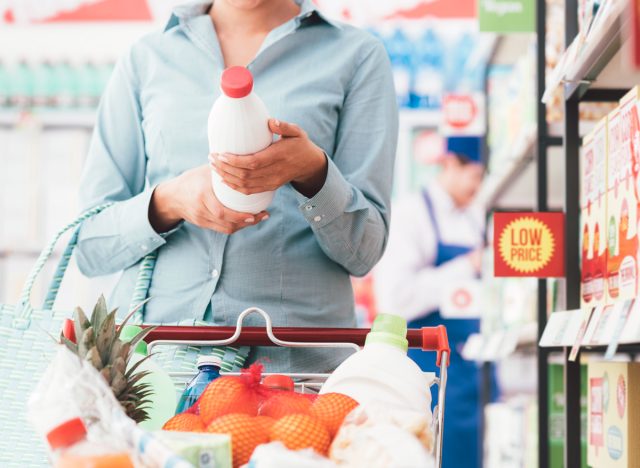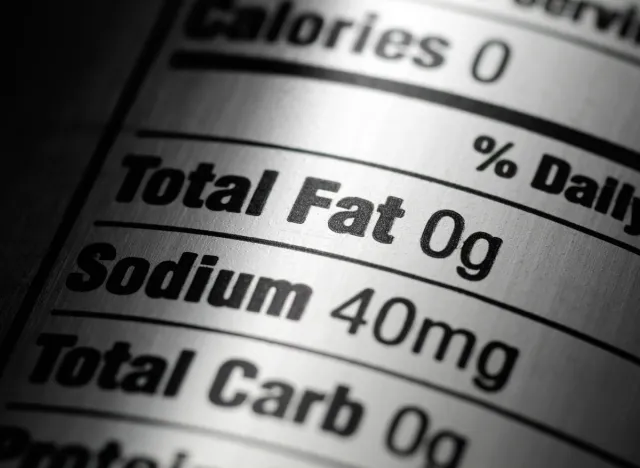How To Read a Food Label for Weight Loss

When starting on a weight-loss journey, one of the most useful resources at your disposal is something you encounter every day: the food label. Understanding how to read and interpret these labels can make a significant difference in your ability to make healthier choices and achieve your weight-loss goals. That being said, food labels can be confusing and overwhelming. In this guide, we’ll break down everything you need to know to become a confident food label reader.
Why Reading Food Labels Is Crucial for Weight Loss

Food labels are more than just a list of ingredients and nutritional facts–they explain exactly what you’re putting into your body. By learning to read food labels correctly, you can make informed decisions that align with your weight-loss goals. Here’s why they matter:
- Caloric Awareness: Understanding how many calories you consume is crucial for weight loss. Food labels give you the exact numbers, helping you stay within your daily caloric needs.
- Nutrient Balance: Food labels help you balance your intake of macronutrients (carbohydrates, proteins, fats) and micronutrients (vitamins, minerals), ensuring that you’re nourishing your body while losing weight.
- Identifying Hidden Sugars and Fats: Many foods contain added sugars and unhealthy fats that can sabotage your weight-loss efforts. Food labels can help you spot these hidden ingredients.
- Portion Control: Serving sizes listed on food labels can help you manage portion sizes, which is key to managing calorie intake.
Understanding Food Labels

To make the most of food labels, it’s essential to understand the key sections and what they mean for your weight loss efforts. Here’s a breakdown of the most important parts:
Serving Size
The serving size is the foundation of the entire food label. It tells you the amount of food that the nutrition information pertains to. This is crucial because all the other numbers on the label (calories, nutrients, etc.) are based on this specific serving size.
Be mindful that the serving size listed may be smaller than what you typically eat. If you consume double the serving size, you need to double the calorie and nutrient amounts as well.
Calories
Calories measure how much energy you get from a serving of the food. For weight loss, keeping track of your caloric intake is essential. Choosing the correct calorie intake for you is very personalized and should be something you speak to a dietitian about.
In general, for weight loss, aim to consume fewer calories to lose weight. However, you don’t want to consume too few calories which could result in muscle loss and disrupt your metabolism.
Macronutrients
- Carbohydrates: Carbs are your body’s primary source of energy. On a food label, you’ll see the total carbohydrates broken down into dietary fiber, sugars, and sometimes sugar alcohols. For weight loss, focus on foods high in fiber and low in added sugars.
- Proteins: Protein is vital for maintaining muscle mass during weight loss and can help keep you feeling full longer. Look for foods with higher protein content, especially if you’re engaging in regular exercise.
- Fats: Not all fats are created equal. Food labels will show you the total fat content, which is further broken down into saturated fat, trans fat, and sometimes unsaturated fats. Aim to limit saturated and trans fats while incorporating healthy fats like those from nuts, seeds, and fish.
- Micronutrients: Vitamins and minerals are listed on the label, often as a percentage of the Daily Value (%DV). These nutrients are essential for overall health, and some can even play a role in weight loss (i.e. calcium and vitamin D). Foods with higher percentages of vitamins and minerals can help you meet your daily nutritional needs while staying within your calorie goals.
What to Watch Out For on Ingredients Lists

The ingredients list is often overlooked but can be critical to understanding what’s really in your food. Ingredients are listed in order of quantity, with the most abundant listed first.
- Added Sugars: Watch for sugars hidden under different names, such as high fructose corn syrup, cane sugar, and molasses. Foods with sugar listed among the first few ingredients are likely high in added sugars.
- Refined Grains: Ingredients like white flour or enriched wheat flour indicate refined grains, which are less nutritious than whole grains. Opt for products that list whole grains as the first ingredient.
- Artificial Additives: Preservatives, artificial colors, and flavor enhancers can be found in many processed foods. These additives may not directly affect weight loss but should be something you’re aware of.
- Hydrogenated Oils: These are sources of trans fats, even if the label claims “0g trans fat.” If you see hydrogenated or partially hydrogenated oils on the ingredient list, it’s best to avoid or limit the product.
Practical Tips for Reading Food Labels More Carefully

To become an expert at reading food labels, keep these practical tips in mind:
- Don’t Be Fooled by Marketing: Claims like “low-fat,” “light,” or “natural” can be misleading. Always check the nutrition facts and ingredients list to see what’s really in the product.
- Check the Serving Size First: Always start by looking at the serving size to accurately interpret the rest of the label. A small serving size may make the product seem healthier than it is.
- Compare Products: Use food labels to compare similar products. Choose the one with fewer calories, less sugar, and more fiber or protein.
- Use the % Daily Value as a Guide: The %DV can help you gauge whether a food is high or low in a particular nutrient. A %DV of 5% or less is considered low, while 20% or more is high.
- Watch for Hidden Sodium: Sodium can sneak into foods under different names, such as monosodium glutamate or sodium bicarbonate. High sodium intake can lead to water retention and bloating, affecting your weight-loss progress.
By mastering the skill of reading food labels, you can take control of your diet and make smarter choices that support your weight loss goals. Remember, the more informed you are about what you’re eating, the better equipped you’ll be to make decisions that lead to long-term success.









